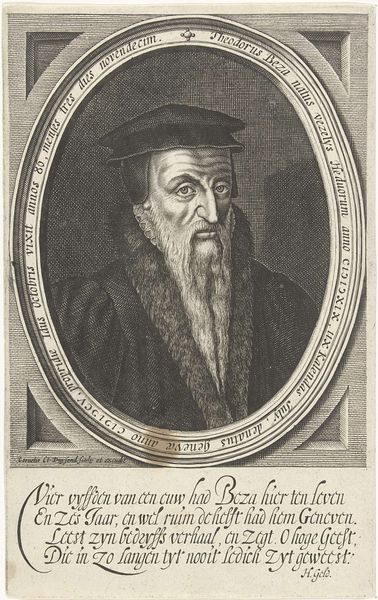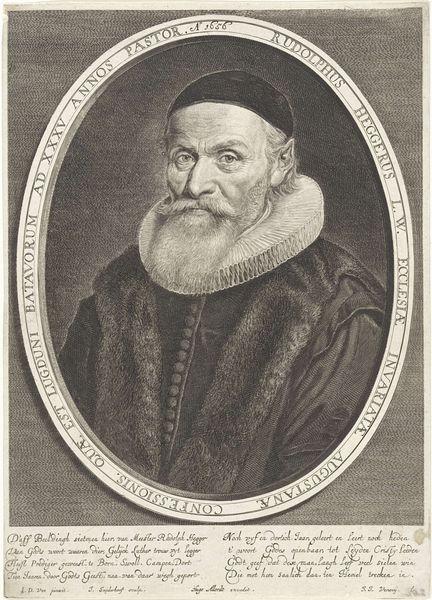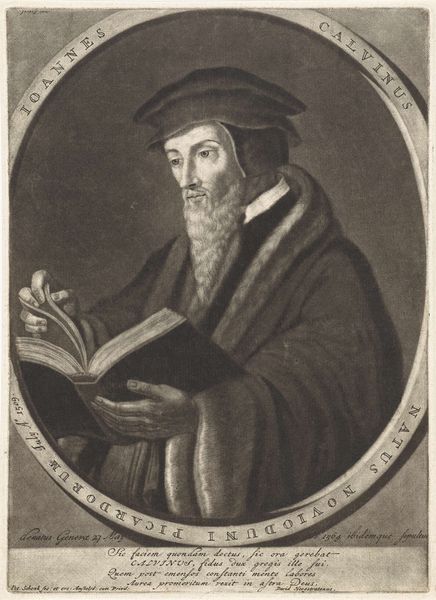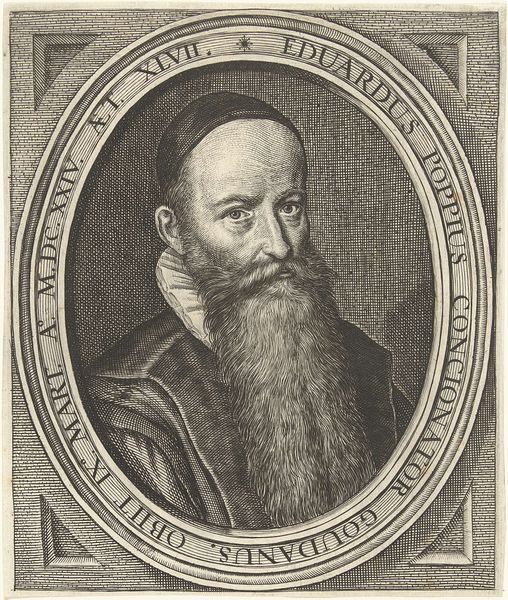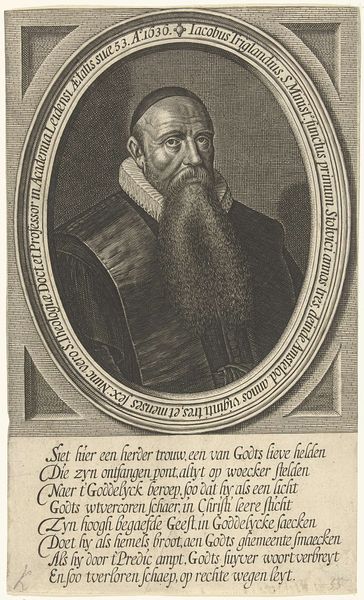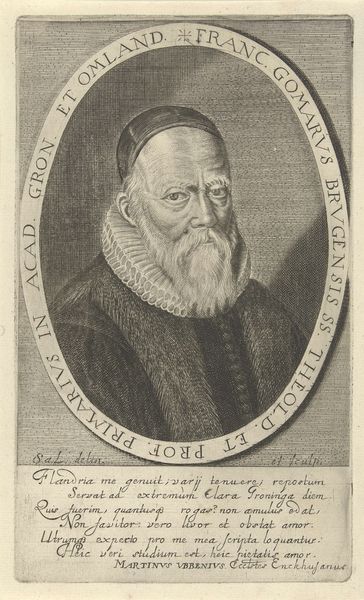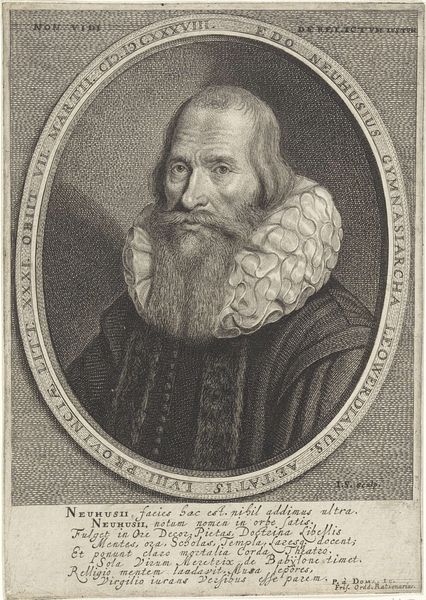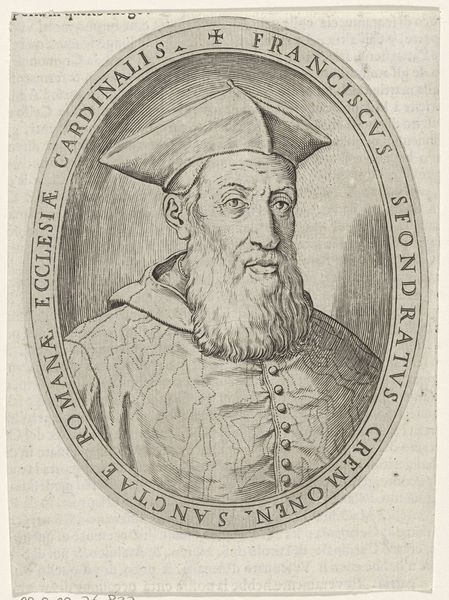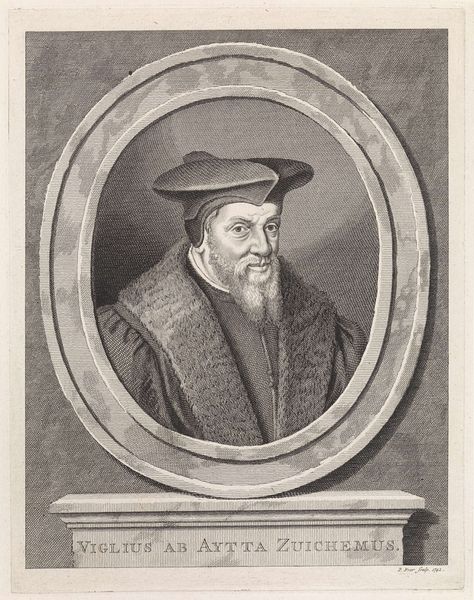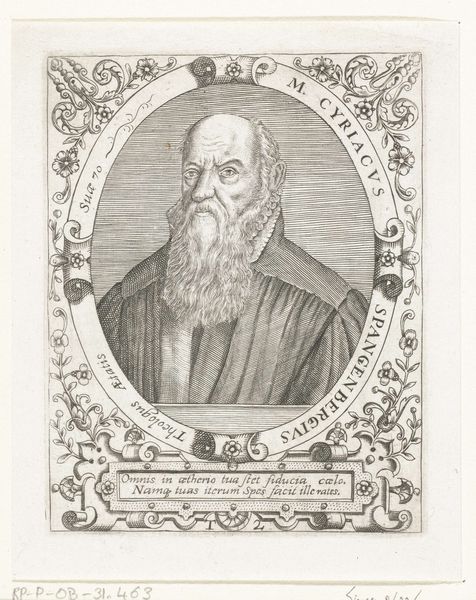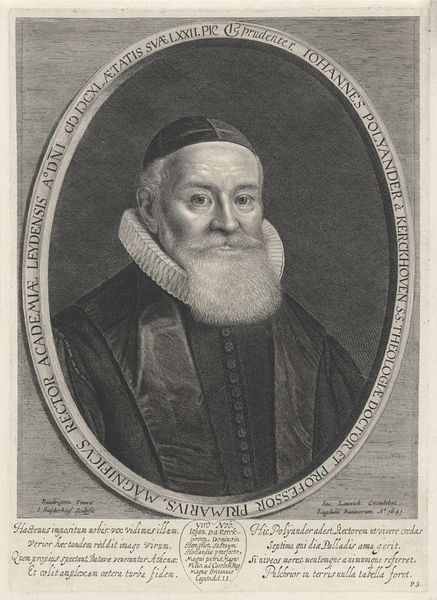
print, engraving
#
portrait
#
baroque
#
dutch-golden-age
# print
#
old engraving style
#
caricature
#
portrait drawing
#
history-painting
#
engraving
Dimensions: height 413 mm, width 292 mm
Copyright: Rijks Museum: Open Domain
Editor: Here we have "Portret van de reformator Theodorus Beza," a print made around 1630-1641 by Cornelis Claesz. Duysend, housed in the Rijksmuseum. It's a striking portrait in the old engraving style. The details are so precise. What draws your eye when you look at this work? Curator: It is fascinating how this image, though seemingly simple, speaks volumes about cultural memory. Theodorus Beza, a key figure in the Reformation, is presented within a formal oval, almost like a commemorative coin. Note the inscriptions surrounding his portrait; these aren't merely labels but symbolic pronouncements. Editor: Symbolic, how so? Curator: Consider the deliberate use of Latin and perhaps a local vernacular. Latin connected Beza to a tradition of scholarly authority, whilst local languages served the more common people. What effect did that division serve in European life during this time? Editor: That division probably indicates different classes being more engaged and connected depending on language familiarity. Curator: Precisely! The very act of creating this print suggests a desire to immortalize Beza, to cement his legacy within the visual culture of the time. Furthermore, portraiture during the Dutch Golden Age was deeply intertwined with notions of identity and status. What, then, does this particular portrait convey about Beza's role? Editor: It presents him as a learned and respected figure, his stern gaze suggesting unwavering conviction. Curator: And that conviction resonates even now. Visual culture became a vehicle for propagating specific ideologies. And, more subtly, this carefully rendered portrait hints at how cultural icons are deliberately constructed and remembered. What have you gotten out of our chat about this work today? Editor: I now appreciate how portraiture serves as an ideological vessel. Thank you.
Comments
No comments
Be the first to comment and join the conversation on the ultimate creative platform.
